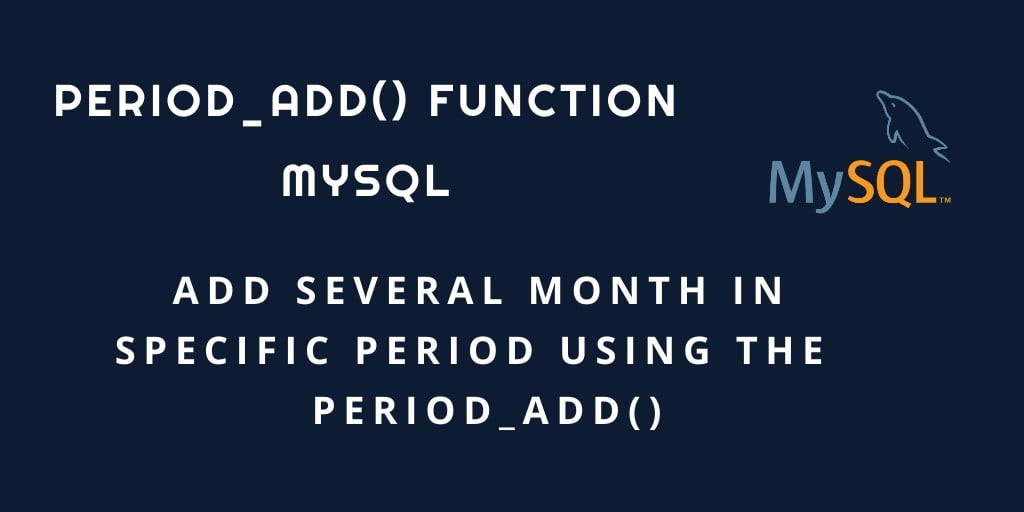MySQL PERIOD_ADD() function; In this tutorial, we would love to share with you how to use MySQL period_add() function with the help of examples.
Here, you will learn how to add specific months in the given period, also learn how to use this query with database tables.
MySQL PERIOD_ADD() Function
In MySQL, PERIOD_ADD () function that allows you to add several months to a certain period. It returns a value in YYYYMM format.
Syntax
The syntax of the MySQL PERIOD_ADD() function is below:
PERIOD_ADD(Period,Num)
Here: Period is the period, and Num is the number of months to add.
Example-1
Let’s take a simple example of this function. The example is below:
SELECT PERIOD_ADD(201901,2);
Output-1
+----------------------+ | PERIOD_ADD(201901,3) | +----------------------+ | 201904 | +----------------------+
We added three months to the given period.
Example-2
Lets’s take an example that adds a negative number of months in given period.
SELECT PERIOD_ADD(202101,-2);
Output-2
+-----------------------+ | PERIOD_ADD(201905,-1) | +-----------------------+ | 201904 | +-----------------------+
Example 3 – Two Digit Years
This example uses the component of the only two-digit year. Here first two number is a year and second to number is a month, after common that the number of periods adds to the given period.
SELECT PERIOD_ADD(1901,2);
Output-3
+--------------------+ | PERIOD_ADD(1901,2) | +--------------------+ | 201903 | +--------------------+
Here, you will notice that the given result by this query is a year in four digits.
Example-4
This example derives the period from the current date. It then adds a month on to that period.
SELECT
CURDATE( ) AS 'Current Date',
EXTRACT(YEAR_MONTH FROM CURDATE( )) AS 'Current Period',
PERIOD_ADD(EXTRACT(YEAR_MONTH FROM CURDATE( )), 1) AS 'Next Period';
Output-4
+--------------+----------------+-------------+ | Current Date | Current Period | Next Period | +--------------+----------------+-------------+ | 2019-07-21 | 201907 | 201908 | +--------------+----------------+-------------+
Recommended Post
Example-5
Now we take another example with MySQL database.
SELECT payment_date AS 'Payment Date', EXTRACT(YEAR_MONTH FROM payment_date) AS 'Payment Period', PERIOD_ADD(EXTRACT(YEAR_MONTH FROM payment_date), 6) AS 'Next Payment' FROM payments WHERE id = 1;
Output-5
+---------------------+----------------+--------------+ | Payment Date | Payment Period | Next Payment | +---------------------+----------------+--------------+ | 2018-01-10 12:50:37 | 201801 | 201806 | +---------------------+----------------+--------------+
Conclusion
Here, you have learned how to use MySQL PERIOD_ADD() function with various examples.
Recommended MySQL Tutorials
If you have any questions or thoughts to share, use the comment form below to reach us.
